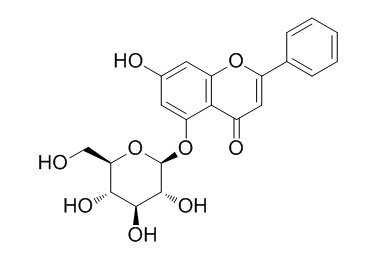Toringin
Toringin prevents the cis-effect of expanded CTG repeats in a stable PC12 cell transformant.
Inquire / Order:
manager@chemfaces.com
Technical Inquiries:
service@chemfaces.com
Tel:
+86-27-84237783
Fax:
+86-27-84254680
Address:
1 Building, No. 83, CheCheng Rd., Wuhan Economic and Technological Development Zone, Wuhan, Hubei 430056, PRC
Providing storage is as stated on the product vial and the vial is kept tightly sealed, the product can be stored for up to
24 months(2-8C).
Wherever possible, you should prepare and use solutions on the same day. However, if you need to make up stock solutions in advance, we recommend that you store the solution as aliquots in tightly sealed vials at -20C. Generally, these will be useable for up to two weeks. Before use, and prior to opening the vial we recommend that you allow your product to equilibrate to room temperature for at least 1 hour.
Need more advice on solubility, usage and handling? Please email to: service@chemfaces.com
The packaging of the product may have turned upside down during transportation, resulting in the natural compounds adhering to the neck or cap of the vial. take the vial out of its packaging and gently shake to let the compounds fall to the bottom of the vial. for liquid products, centrifuge at 200-500 RPM to gather the liquid at the bottom of the vial. try to avoid loss or contamination during handling.
Plants2022, 11(3),294.
Anim Cells Syst (Seoul).2024, 28(1):381-391.
J Ethnopharmacol.2017, 206:327-336
Internoational J of Toxicology2020, 10.1177.
Int J Mol Sci.2023, 24(24):17589.
Int J Mol Sci.2024, 25(5):2914.
J Agric Food Chem.2024, 72(42):23183-23195
Babol University of Medical Sciences2024, rs-4289336
J Ethnopharmacol.2022, 289:115018.
JPC-Journal of Planar Chromatography2023, 36:179-190
Related and Featured Products
Biochem Pharmacol. 2005 Feb 1;69(3):503-16.
Some flavonoids and DHEA-S prevent the cis-effect of expanded CTG repeats in a stable PC12 cell transformant.[Pubmed:
15652241]
Expanded CUG triplet repeats carrying mRNA seem to be responsible for myotonic dystrophy type 1 (DM1). To study the pathogenesis of DM1, we constructed a DM1 cell culture model using a PC12 neuronal cell line and screened flavonoids that ameliorate this mRNA gain of function.
METHODS AND RESULTS:
The expanded 250 CTG repeat was subcloned into the 3'-untranslated region of the luciferase gene yielding a stable transformant of PC12 (CTG-250). The cytotoxicity of CTG-250 was evaluated by intracellular LDH activity, and the cis-effect by luciferase activity. To find agents that alter CTG-250 toxic effects, 235 bioflavonoids were screened. An increased cis-effect and cytotoxicity were found when CTG-250 was treated with nerve growth factor to induce differentiation. Western blotting with anti-caspase-3 antibody suggested that cell death was caused by apoptosis. Screening analysis confirmed that a flavone (Toringin), an isoflavones (genistein and formononetin), a flavanone (isosakuranetin), and DHEA-S prevent both the cytotoxicity and cis-effect of CTG-250 and that a flavanone (naringenin), isoflavone (ononin), and xanthylatin strongly inhibit the cis-effect of CTG repeats.
CONCLUSIONS:
In conclusion, we found that this neuronal cell line, which expresses the CUG repeat-bearing mRNA, showed cis-effects through the reporter gene and neuronal death after cell differentiation in vitro. However, some flavonoids and DHEA-S inhibit both the cis-effect and cytotoxicity, indicating that their chemical structures work to ameliorate both these toxic effects. This system makes it easy to evaluate the toxic effects of expanded CTG repeats and therefore should be useful for screening other DM1 treatments for their efficacies.



